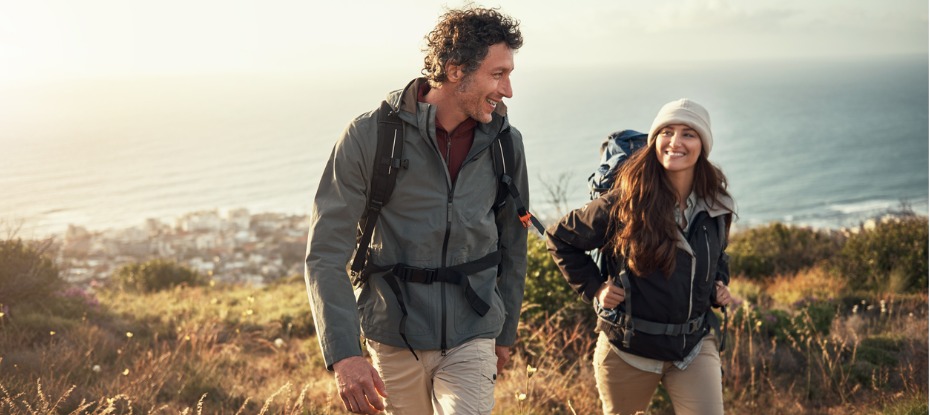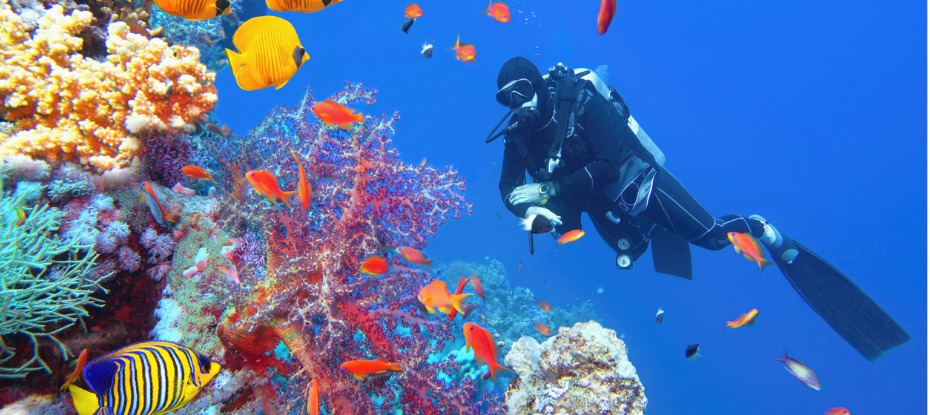
When it comes to doing our part for the environment regularly, we're aware of what we can do - from sorting our rubbish and recycling to taking shorter showers and reducing the use of plastic. But when it comes to travel, the concern tends to disappear, and we may forget about the massive footprint we're leaving behind. Luckily, there are a few changes we can implement to make our trips more environmentally friendly.
Whatever kind of travel you do, there's always something we can do to improve.
What is Sustainable Travel?
According to the World Tourism Organisation (UNWTO), sustainable travel means considering current and future economic, social, and environmental impacts and addressing the needs of the visitors, industry, environment, and communities.
Sustainable travelling means minimising our impact on the planet. Actions can be small and include simple changes such as choosing a more environmentally friendly meal, taking public transport, or opting for carbon offsets on a flight. Sustainable choices reduce the negative impact of your trip on the environment, society, and economy of your destination.
In a National Geographic survey, 50% of 18 to 34-year-old people surveyed are familiar with sustainable travel - the most informed age group. Around 56% of respondents acknowledged travel impacts local communities and the importance of protecting sites and cultural places.
Overtourism is when an excessive number of tourists visit a popular destination, causing damage to the environment or site and driving poor quality of life for locals.
September 27 is World Tourism Day. A day where a discussion embraces sustainable tourism and the importance of protecting the environment and economic development in communities affected by tourism.
Leave no Trace
Tourists should be mindful of the 7 Principles of Leave No Trace whenever they travel. These offer a guide for minimal environmental impact during outdoor visits, applicable everywhere from wilderness areas to one's backyard. These Principles are dynamic, being regularly updated based on insights from experts in biology, land management, and outdoor education.
The 7 Principles of Leave No Trace are:
- Plan ahead and prepare
- Travel and camp on durable surfaces
- Dispose of waste properly
- Leave what you find
- Minimise campfire impacts
- Respect wildlife
- Be considerate of others
Respecting Local Culture
Part of being a conscious traveller is to respect local culture. Most people around the world welcome international tourists to their country as it accounts for an essential part of their economy but many hold disdain for tourists who don’t respect the locals and their culture. Know what clothing attire is appropriate before you arrive in a different country. Wearing shorts and tank tops at home may not necessarily mean it’s proper and respectful in the country you’re visiting. You may need to wear more or different clothing to show less skin or cover your hair, such as when visiting a church or mosque, where the religion’s rules are strict and important to be aware of. If unsure, it is better to ask than be disrespectful.
Ecological Footprint
Be mindful of the ecological footprint that your trips create. Travel accounts for 5% of global warming due to CO2 emissions from air travel, and around 8% of the world’s carbon emissions are attributed to tourism. Moreover, it causes greenhouse gas emissions, poor waste disposal, and land degradation.
The UK Government’s Department for Energy Security and Net Zero compiled data on the carbon footprint of travel per kilometre. They found that domestic flights had the highest carbon dioxide equivalents per passenger kilometre at 246g, long-haul flights were 193g, diesel cars 171g, petrol cars 170g, short-haul flights 154g, motorbikes 114g, bus 97g and national rail 35g. Of course, walking or cycling generates the lowest carbon dioxide equivalents per passenger kilometre. Using a bike rather than a car for short trips reduces travel emissions by 75%. The next best option is public transport. For private travel, the best option is to drive an electric vehicle as it emits less CO2 than a petrol car.
Some countries are legislating so locals and travellers reduce their carbon emissions by taking a train instead of a plane for short journeys. A train journey emits around 1 kg of CO2 compared to 22 kg travelling the same distance on a plane. In France, plane journeys that last less than 2.5 hours have been banned, and Germany and Austria are expected to follow suit.

Conserving Natural Resources
Too many tourists can add excessive pressure on local natural resources, including water, energy, and wildlife. Hotels are heavy water users for swimming pools, landscaping, spa baths, and showers and can place pressure on areas that can experience water shortages.
Accommodating tourists requires electricity for heating and lighting, which can also be a burden for the local energy infrastructure.
What you can do
Choose sustainable, eco-friendly accommodation while travelling. Some accommodation choices use renewable energy sources, recover and reuse water, and are green buildings. Choose locations that don’t have pools and keep your showers short to conserve water and energy.
Eating Out While Travelling
Eating well is an essential component of the enjoyment of a trip for many. However, some locations have limited food options locally and have to import most of what the locals and tourists eat. Often, this means some of the finer food may have travelled long distances to get to our plates and may add pressure on local food supplies. For example, many tourists enjoy local seafood when travelling, which can put pressure on the stock due to overfishing.
What you can do
Choose locations with easy access to a wide range of local produce to enjoy fresh food. The shorter the distance food travels to get to your plate, the less fuel and greenhouse gases are created. The bonus is less chance of spoilage and nutrient loss because it’s fresher. Beyond knowing what food is in season and produced locally, you’ll support local farmers and the community’s economy.
Interactions with Wildlife
Tourists can cause harm to wildlife, but the worst part is most are unaware their actions are harmful. Consciously or unconsciously, they may support unethical wildlife attractions that can cause suffering to animals, and wildlife tourism can cause significant disturbances to animals in their natural habitats.
What you can do
Doing your part means ensuring any wildlife attractions you visit aren’t forcing animals to behave unnaturally, frightening them, or feeding them incorrectly because this can interrupt their social patterns and life cycle.
When seeing animals in the wild, maintain the recommended distance, and never feed or touch them, as you can compromise their health as well as yours. Do your research and look for activities that contribute to the conservation of local animals.
Conservation Efforts
Environmental conservation involves protecting habitats like rainforests and coral reefs and increasing biodiversity by adopting sustainable lifestyle practices.
Unfortunately, in many cases, tourism can be detrimental. Tourist boats anchoring on coral reefs and too many people visiting can put pressure on natural habitats. And while hiking can be an environmentally friendly activity, it can become damaging when tourists don’t stay on established trails and trample vegetation and possibly cause erosion.
What you can do
If you’re taking a tour, choose an ethical tour operator that supports communities, animals, and the environment. Go plastic-free when you can, such as taking refillable water bottles, saying no to single-use plastic bags and straws, and taking your cutlery. Be a responsible hiker, diver, and camper to protect the local environment wherever you go.
Best Family Destinations Australia
Travelling within Australia during holidays is one way of travelling sustainably. The fewer kilometres travelled, the less carbon emissions created. Staying within your country also allows you to learn and support the conservation efforts made and support local farmers, artists, and culture. There are nearly 8 million square kilometres of wilderness to explore in Australia, where you can be sure to find something for everyone.
Many lodges and stations in Australia dedicate themselves to making a difference to the local flora and fauna. Arkaba in the Flinders Ranges in South Australia, Wooleen Station in Western Australia, and the Saffire Wilderness Lodge at Freycinet Peninsula in Tasmania make conservation the focus of their stays.

The world heritage-listed Great Barrier Reef needs the support of all Australians. With climate change causing bleaching of the coral reef, time is running out to see the magnificent coloured coral. Choose an eco-certified tour operator and add your grain of sand to the cause.
Learn about the cultural significance of the famous Australian landmark Uluru and explore Arnhem Land near Darwin when you visit the Northern Territory.
Watch the colony of little penguins return to shore at dusk each day from purpose-built viewing platforms that don’t interfere with the natural habitat on Phillip Island, Victoria.
Tasmania embraced ecotourism before most states in Australia to protect its unique geographical assets. Take the suspended Tahune Airwalk that protects the rainforest from hordes of hikers or white-water rafts on the Franklin River.
Whether you want to explore marine life, enjoy the vibrant city life in Sydney, or appreciate unique wildlife in Phillip Island, you'll be sure to create lifelong memories in these amazing destinations. Pack your bags, prepare for adventure, and embark on a family journey through the wonders of Australia! - don't forget travel insurance just to be safe and stress- and worry-free.